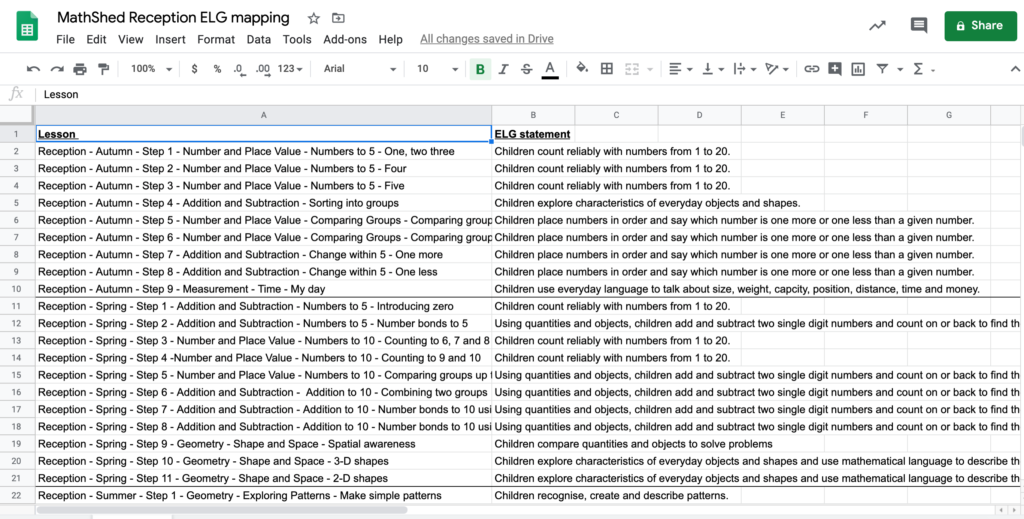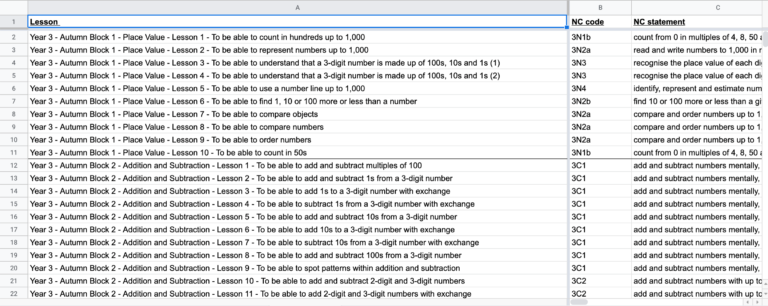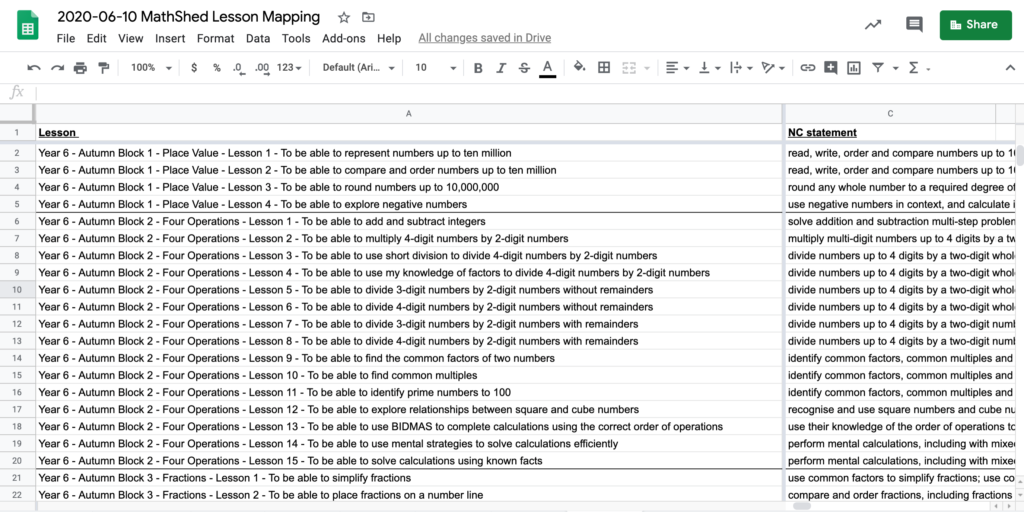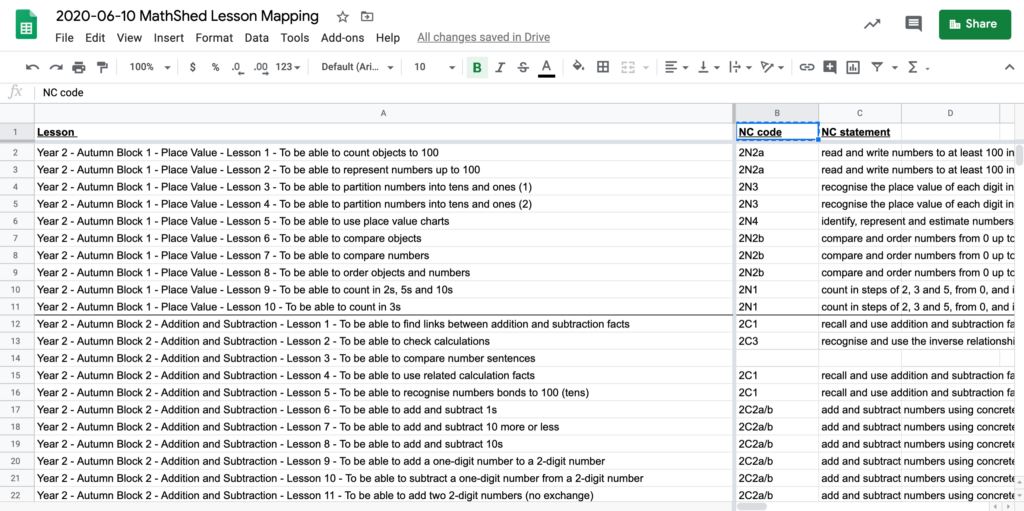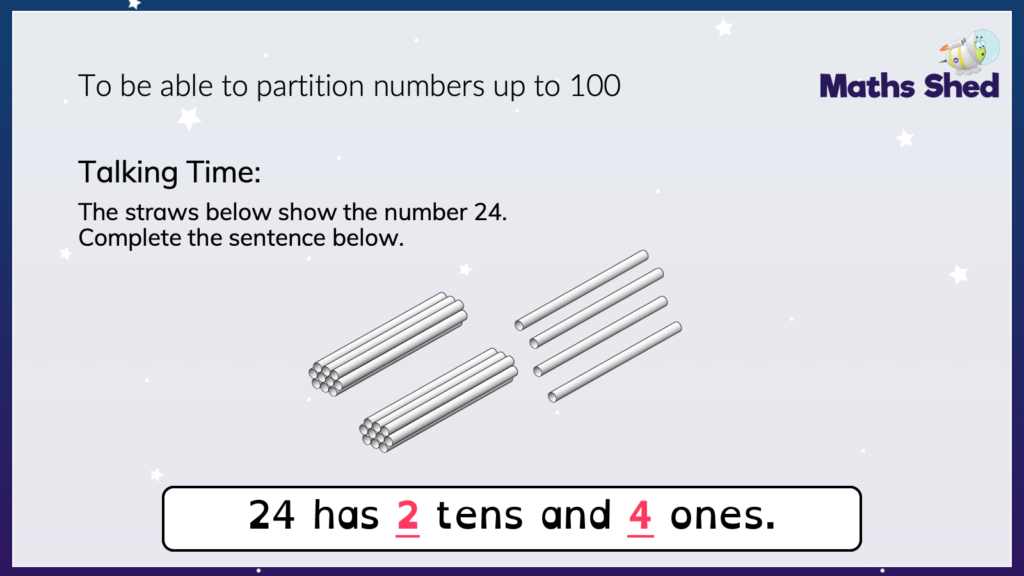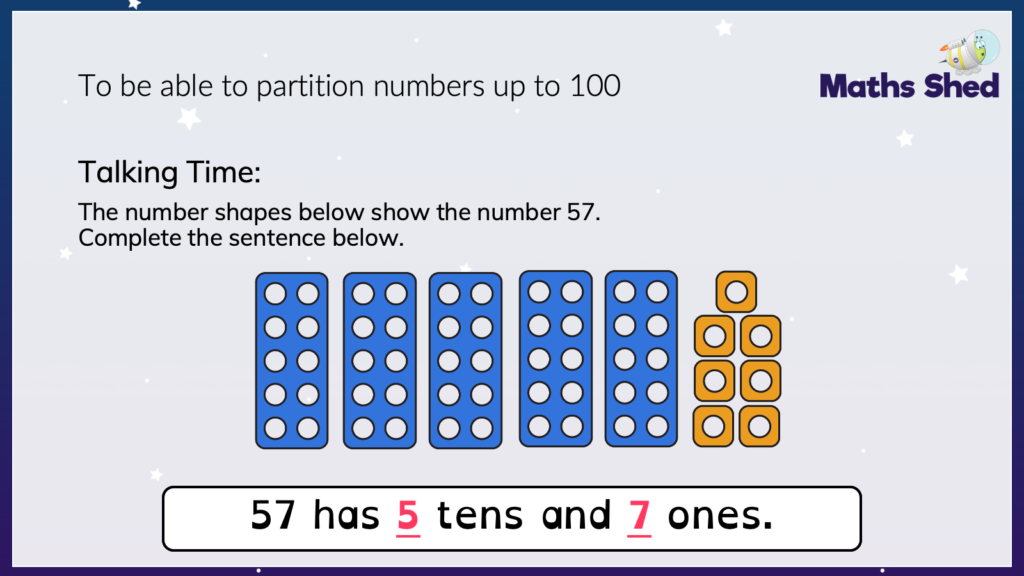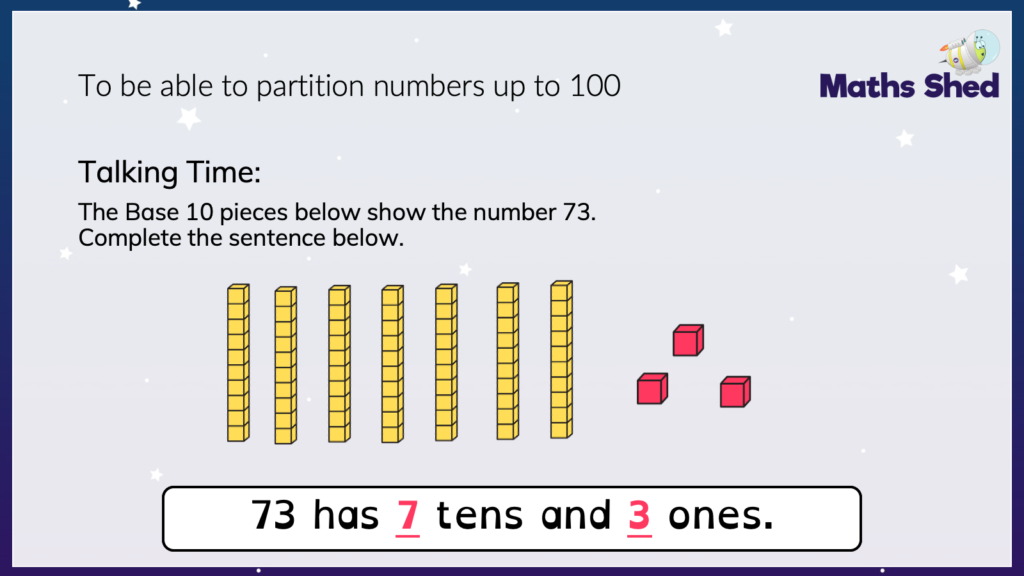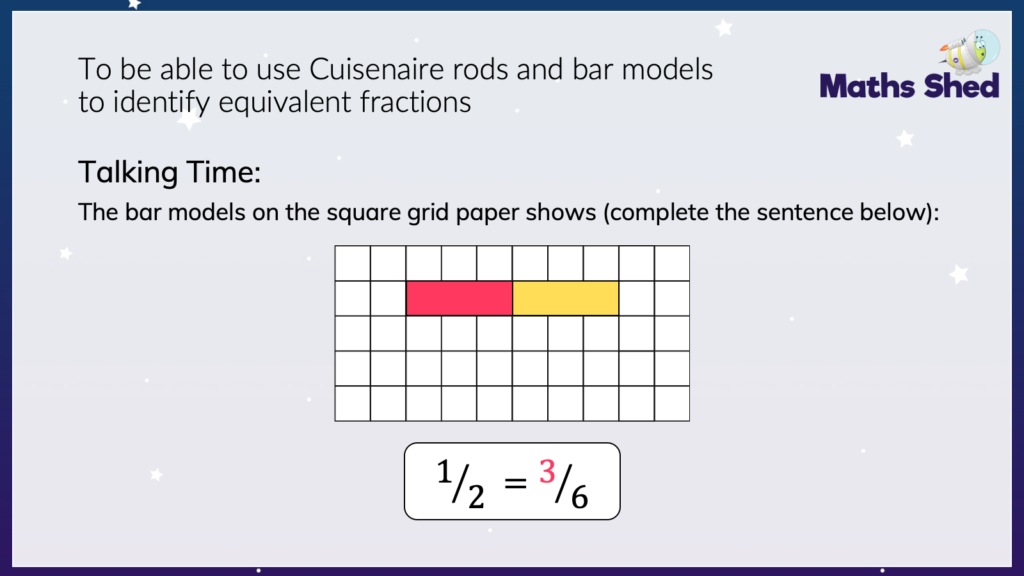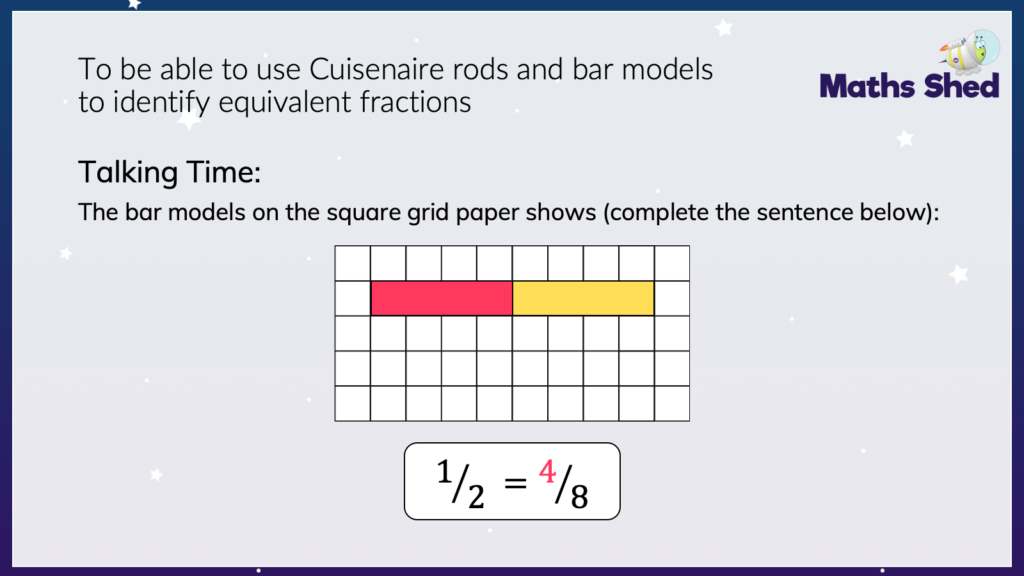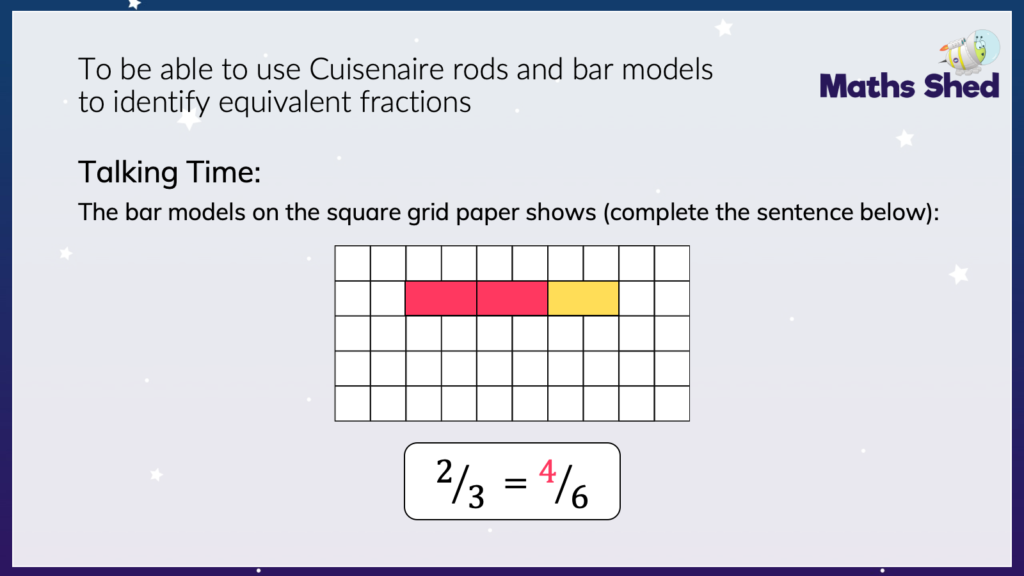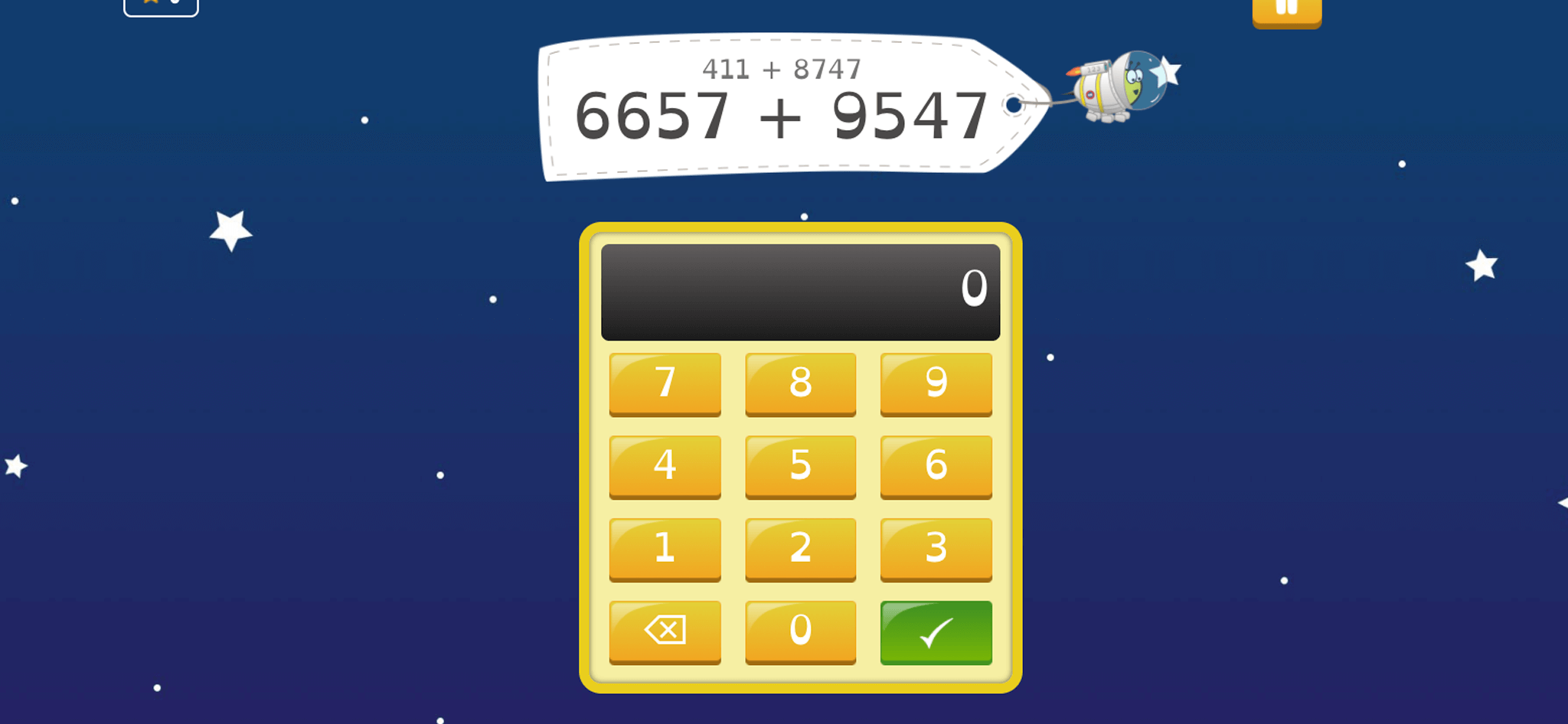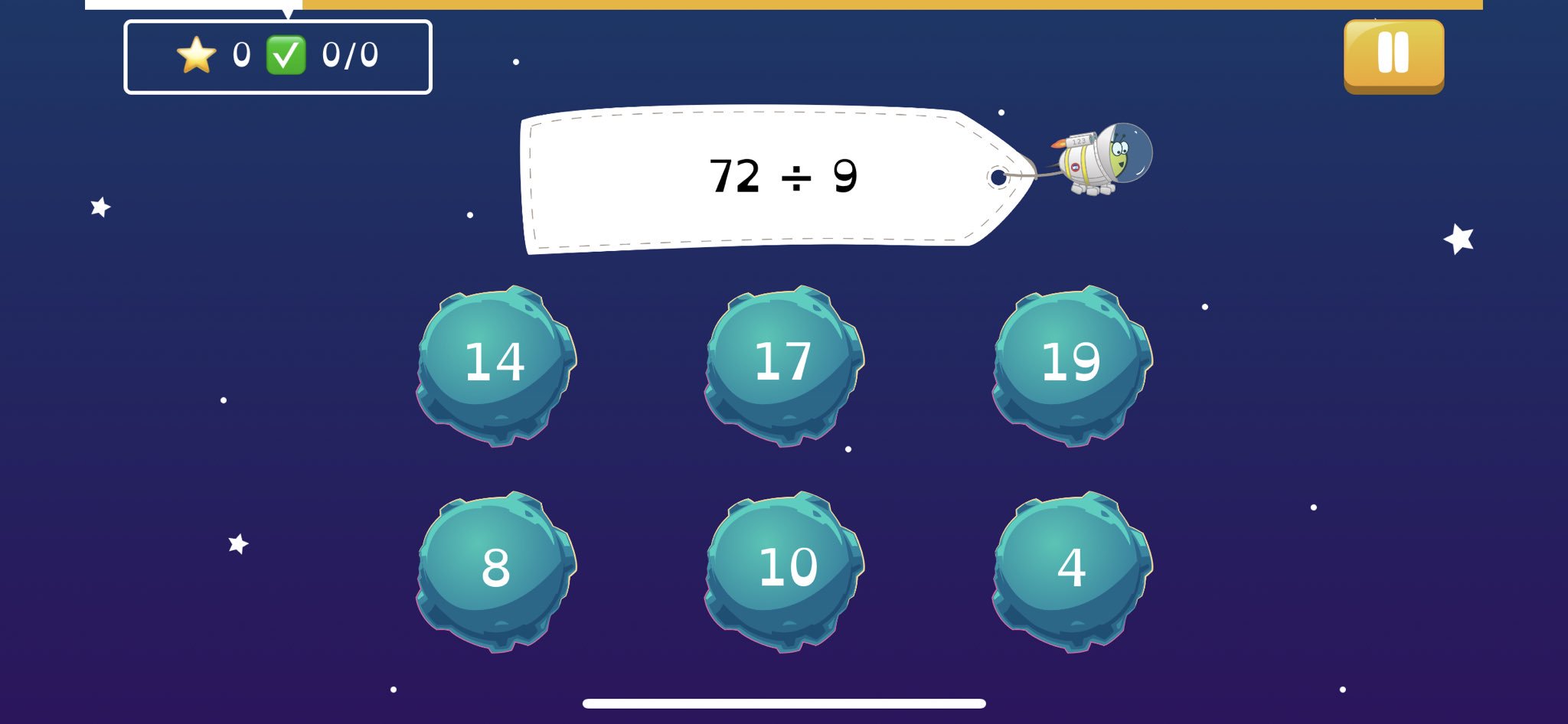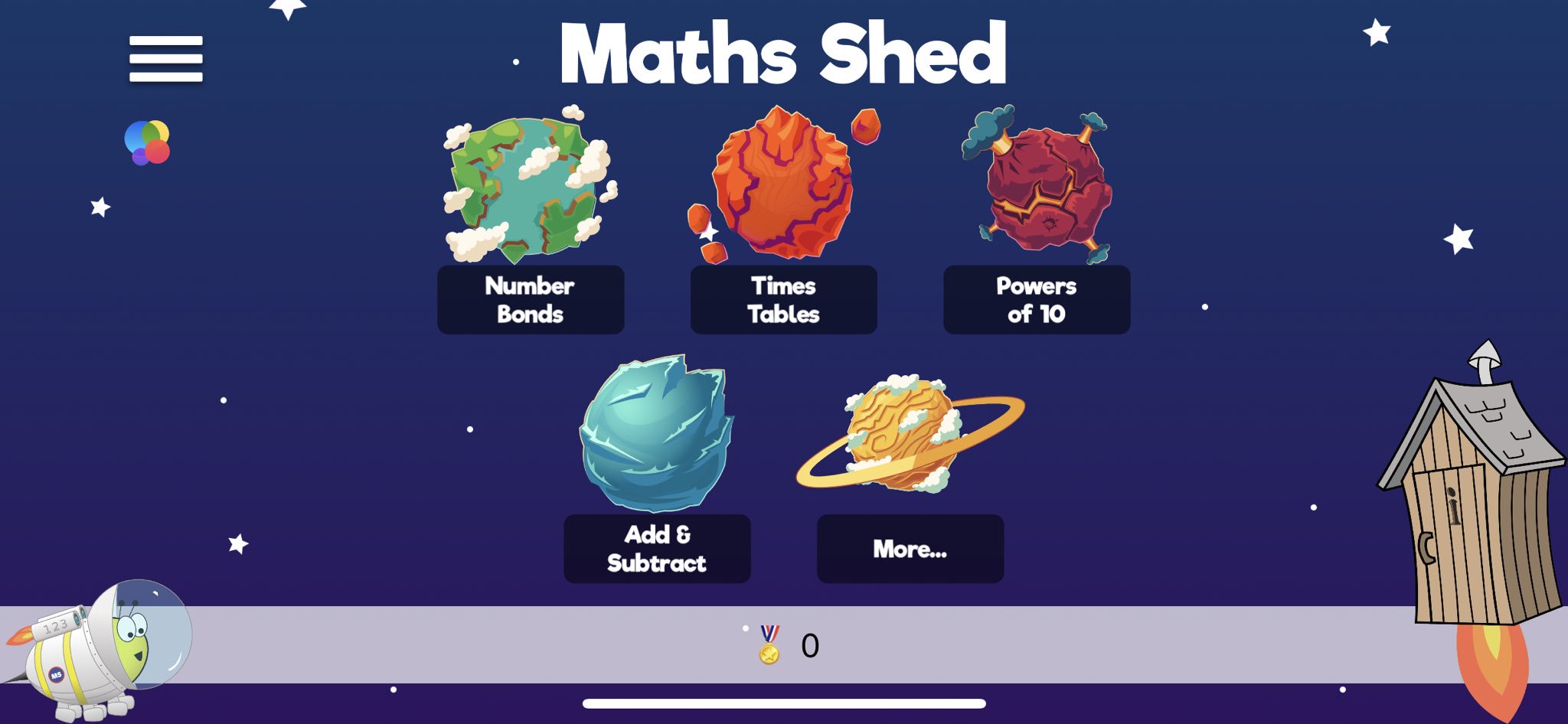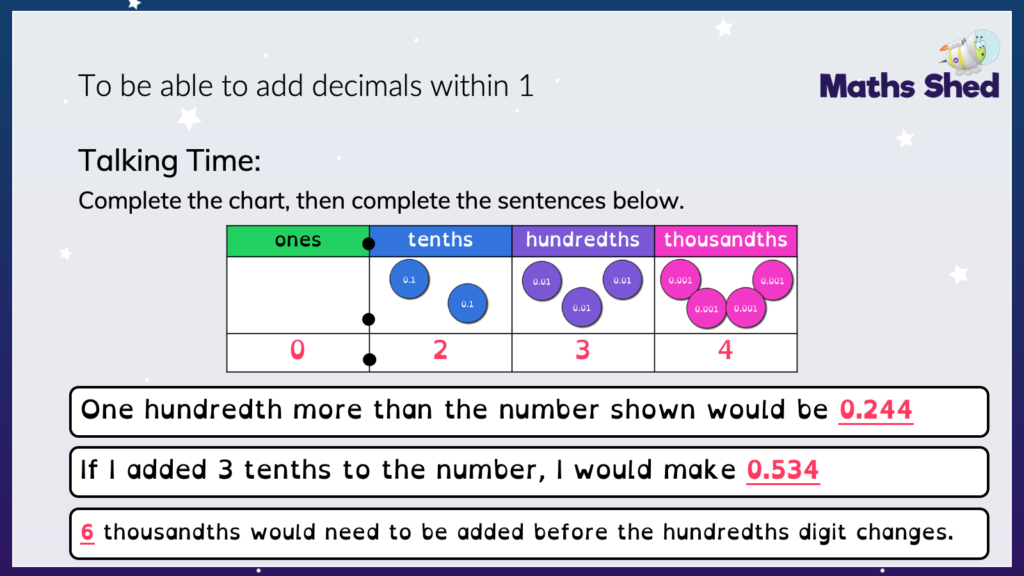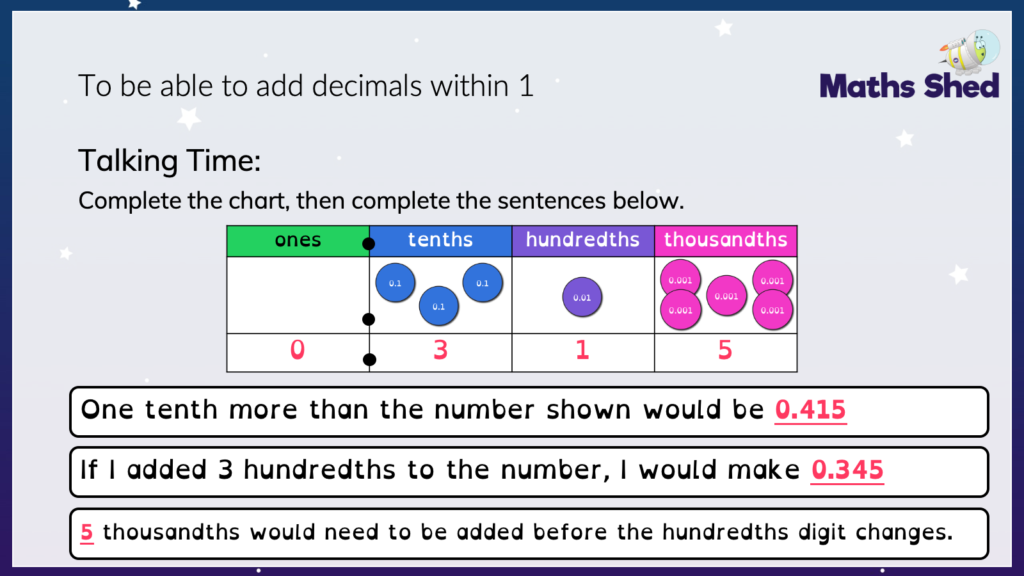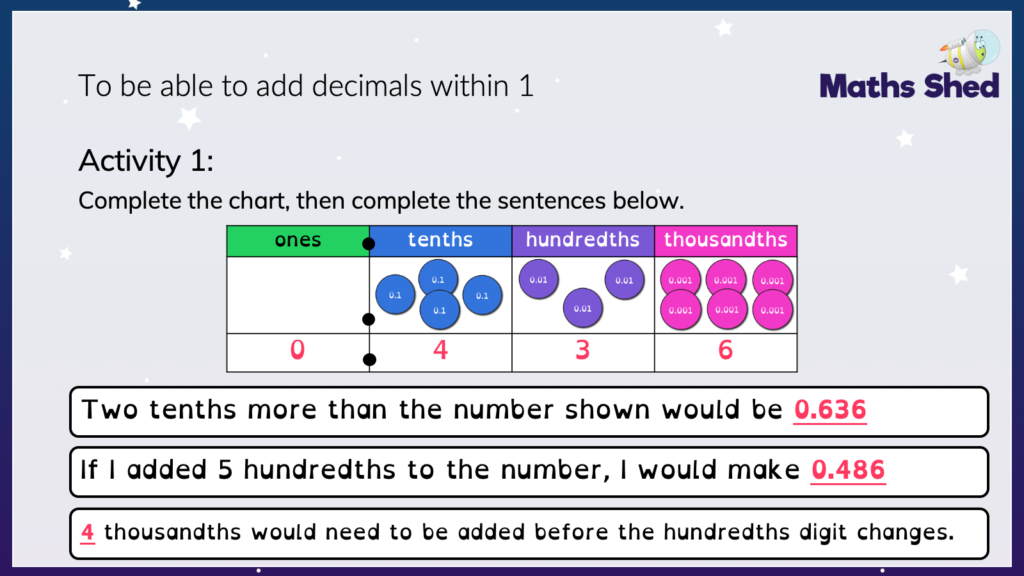MATHSHED’S MASTERY SCHEME
White Rose-style and mastery maths learning from MathShed
Not only do we have our calculation fact fluency web game and app, we also provide a full mastery scheme to teachers and schools who subscribe to MathShed.
Key features:
- Fully-resourced
- Complete curriculum coverage
- Practical tasks
- Worksheets or worksheet-free teaching options
- Whole-class with inbuilt differentiation and extension ideas
- Prepared tasks for whole class instruction and practice
- Concrete-pictorial-abstract approach applying micro-differentiation
Introduction
Our click-and-play MathShed teaching slides have been designed to facilitate a discursive, whole-class, teacher-led approach to the teaching and learning of mathematics.
We have drawn inspiration from a number of places: Shanghai, Singapore, the USA’s NCTM, the UK’s NCETM, as well as a popular scheme in the UK, White Rose Maths.
Each lesson is intended to be accessible for a mixed-ability class, with differentiation possible through adult or peer support (mixed-ability pairings or groupings) and particularly through the use of mathematical equipment (from Base 10 pieces, to Cuisenaire rods, to place value counters) and scaffolds, such as place value charts or times tables grids.
100 % Curriculum Coverage
We have written our scheme to ensure 100% curriculum coverage, not only to the national curriculum for England and the Department for Education’s Early Learning Goals but other curricula too!
Worksheets or Worksheet-Free?
We also hope the way the MathShed lesson presentations have been designed to allow teachers the choice of printing our materials or allowing children to work together from an interactive whiteboard.
It offers the children an opportunity to grow in independence by taking ownership of the presentation of work in their books, responding to or representing tasks that require fine-motor skill practice, as well as being more environmentally-friendly!
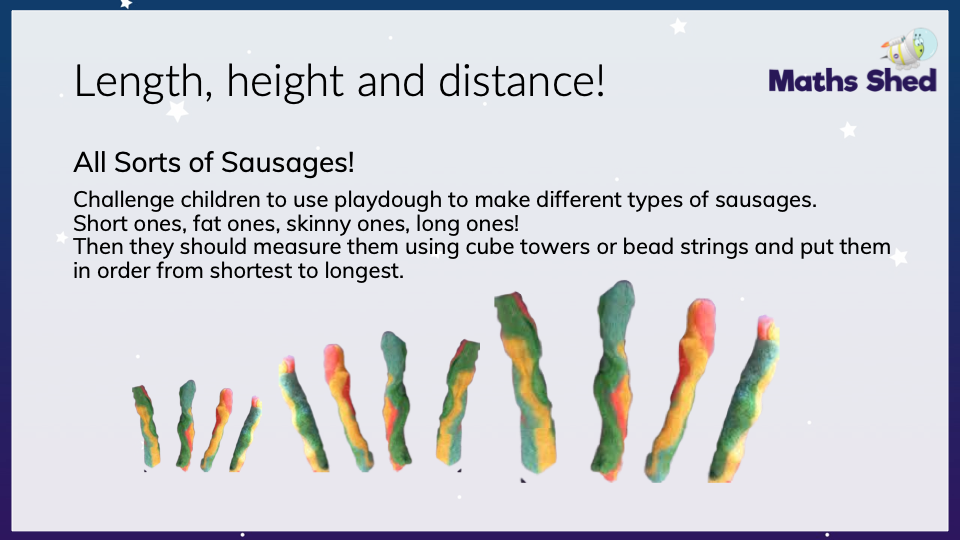
Starter Activities
Every MathShed lesson begins with a Starter activity that will either follow on from the previous lesson’s learning or begin to introduce the focus of the particular lesson the class are embarking upon.
We often lead with a question that requires some reasoning and that introduces children to the mathematical equipment or pictorial representations (such as bar models or part-whole models) that will be used throughout the lesson at hand.
With your class or group, it is up to you to choose whether these tasks are completed independently, collaboratively, or as a whole class discussion.
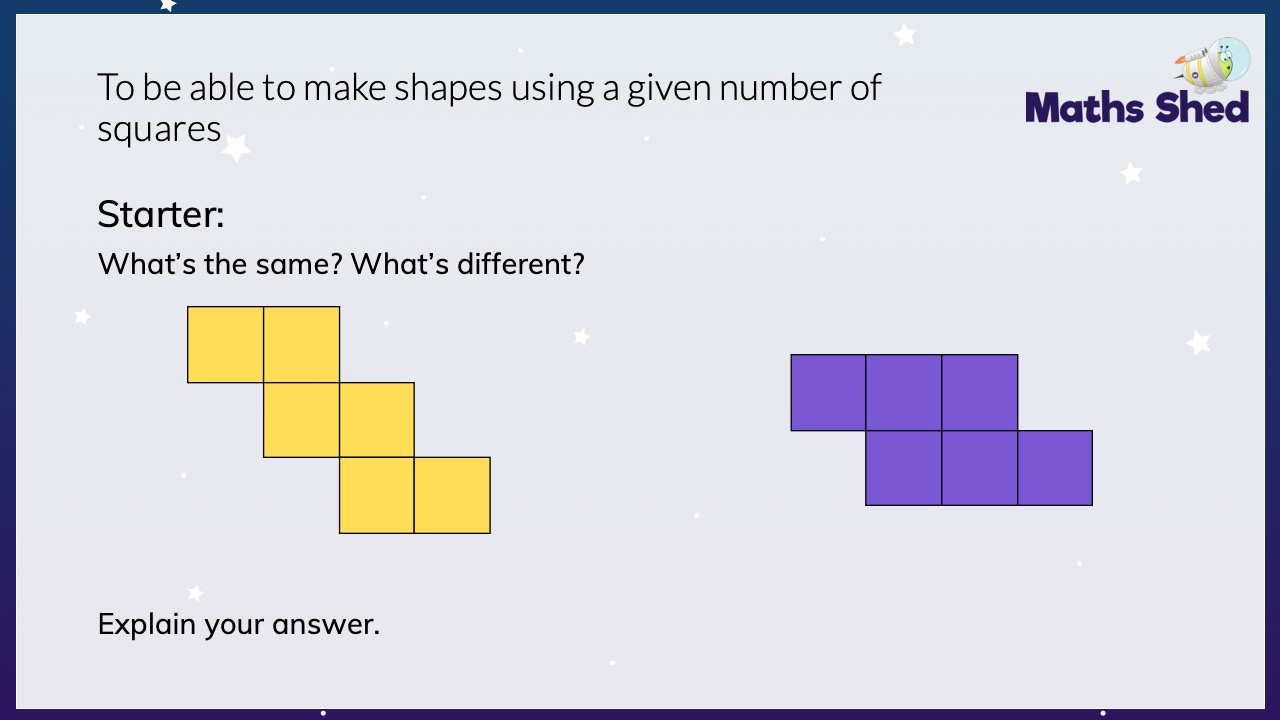
Mastery and the Concrete-Pictorial-Abstract Approach
You will notice when using our whole-class MathShed teaching presentations that we provide examples of most possible mathematical equipment that can be used for each topic, as well as various pictorial structures, allowing for optimal conceptual variation.
Ultimately, a mastery approach is intended to allow children to become fluent and fluid in identifying, choosing and applying multiple models, structures and strategies when solving calculations, applying reasoning or solving mathematical problems or investigations.
By introducing and revisiting multiple forms of representation and strategies, children are given the best possible opportunity of achieving mastery in mathematics! Equally, in doing so, children are able to engage in metacognition (more mindfully too) as they are enabled to grow in awareness of the thinking about the thinking they need to do to solve calculations or problems when choosing and applying mathematical strategies.
Talking Time Slides for Whole Class Discussion and Instruction
Following the Starter activity, generally our lessons have Talking Time slides that tend to generate discussions drawing out where the children may have encountered the mathematical concept before in real-life (or where to look out for it in future!).
By building in multiple Talking Time slides, you are afforded greater opportunity to gauge the children’s current capabilities or know-how, and/or model the strategy or impart the knowledge the class require to access and succeed in the first activity (and often the following activities too).
Progression in Fluency Tasks
For the majority of lessons, Activities 1, 2 and 3 tend to focus largely on fluency within the topic or method of that particular lesson and its core learning objective.
There is also generally a progression through these Activities through using mathematical equipment, to applying that experience to sketches or pictorial representations, through to applying the knowledge gained or skill taught and learned in an abstract, less-scaffolded form.
(You always have the choice of allowing pupils to continue using the equipment or scaffolds enabling them to access the later activities – or extension by asking children to write their own questions or problems similar to those included in each activity.)
You can supplement fluency in mathematical facts and operations using our web game / app, which comes as part of your MathShed subscription at no additional cost!
Micro-differentiation, Confidence and Increasing Attainment
You may also notice that the questions and activities in our lessons build in difficulty or complexity as the lesson progresses.
We are big believers in confidence being the route to mathematical success for children, so have worked hard to make our lessons micro-differentiated so children have the chance to grow in assurance and self-reliance throughout their learning journey in mathematics, both within, through and across lessons and units of learning, leading to acceleration of progress and attainment.
Teacher-led Instruction and Continuous Formative Assessment
Our lessons have also been designed to allow for staged instruction, with Talking Time slides allowing for a Me-We-You approach.
Generally, there is a teacher model question, the class working through a question or problem alongside the class teacher, then example problems for fluency practice before embarking upon each Activity either independently, collaboratively or with adult support, based on your decisions regarding differentiation for the children in your class.
Similarly, each Activity (and even the Talking Time slides) are split into question and answer slides, allowing for multiple mini-plenaries throughout the lesson to enable you to provide continuous formative assessment to be able to react to and address misconceptions and confusion in the moment (as well as an opportunity for live-, self- or peer-marking to reduce teacher workload outside of class time)!
Inbuilt Reasoning, Problem Solving and Investigative Tasks
The latter activities, Activity 4, 5, 6 or even 7 (depending on the lesson), generally progress from fluency tasks to tasks requiring reasoning, problem solving or investigation.
Again, these tasks can be completed independently, in pairs or groups, with adult support and with or without mathematical equipment, scaffolds, pictorial representations (such as bar models or part-whole models).
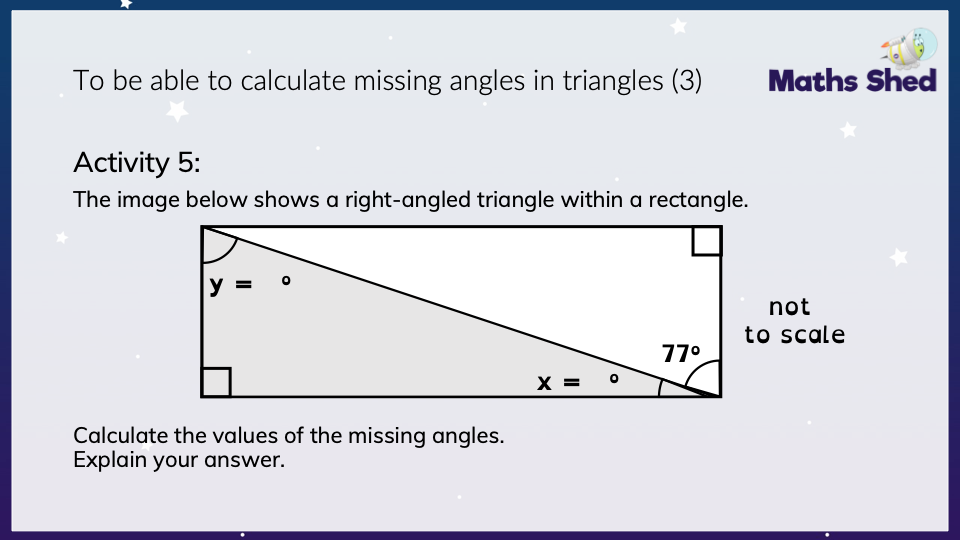
Evaluation Questions for Formative Assessment
Every lesson also ends with an Evaluation question.
Some are low-ceiling, high-threshold tasks; others allow the children an opportunity to give a summary of the day’s learning; whilst others again encourage the children to prove a rule or disprove a misconception.
Regardless, each is designed to allow you an insight into each child’s progress and attainment within that lesson and across a unit of learning.
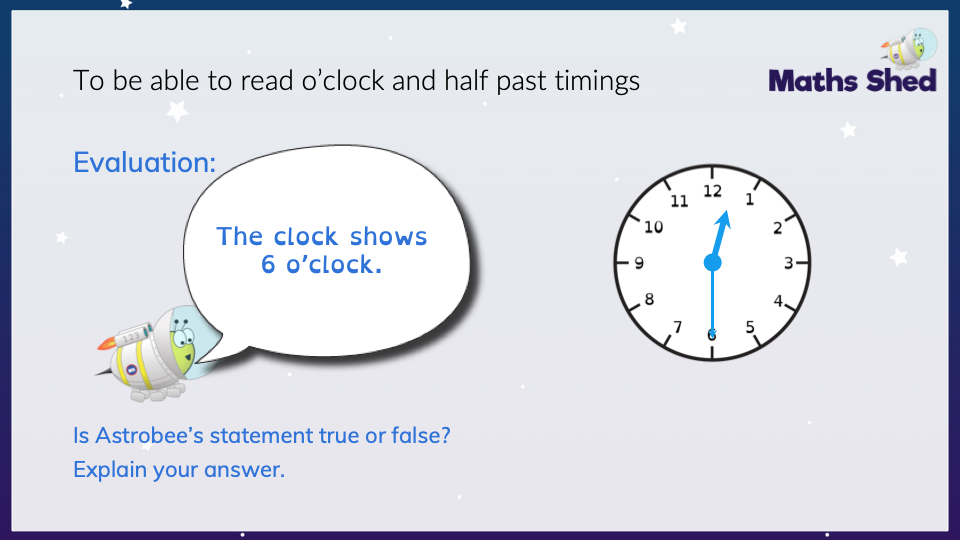
How long should each unit and each lesson within a unit last?
Some of our lesson slides might neatly fit within one lesson; however, others might last more or less time than that.
Altogether, our scheme encompasses 659 small steps or lessons from Reception up to Year 6 with each year group from Year 1 to Year 6 having an average of about 105 lesson slide presentations.
Given there are approximately 190 teaching days in a school year, the lesson slides should be complemented by pre-unit and post-unit assessments, investigation lessons and other cross-curricular or real-world learning opportunities to diagnose areas of strength and weakness to then consolidate, challenge, extend and deepen the children’s growing mathematical understanding.
Certain units of learning, particularly in Year 2 and Year 6, are left open for interpretation and resourcing and to allow for preparation for and some relaxation after national assessments! (These are identifiable as grey cells in the yearly overviews provided.)
Reception Yearly Overview:
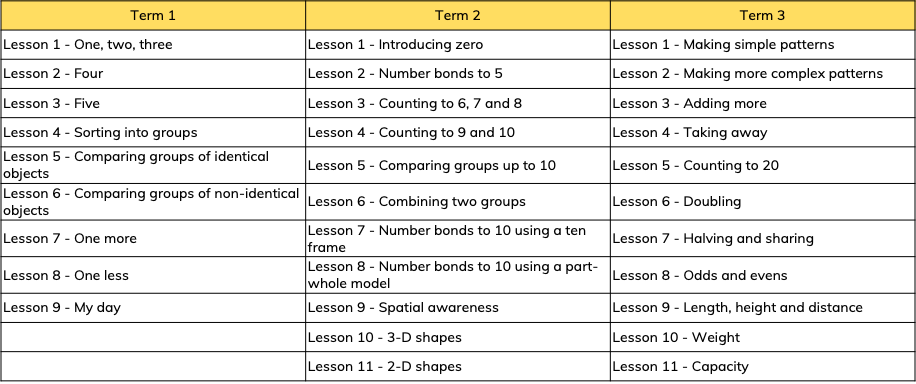
Year 1 Yearly Overview:
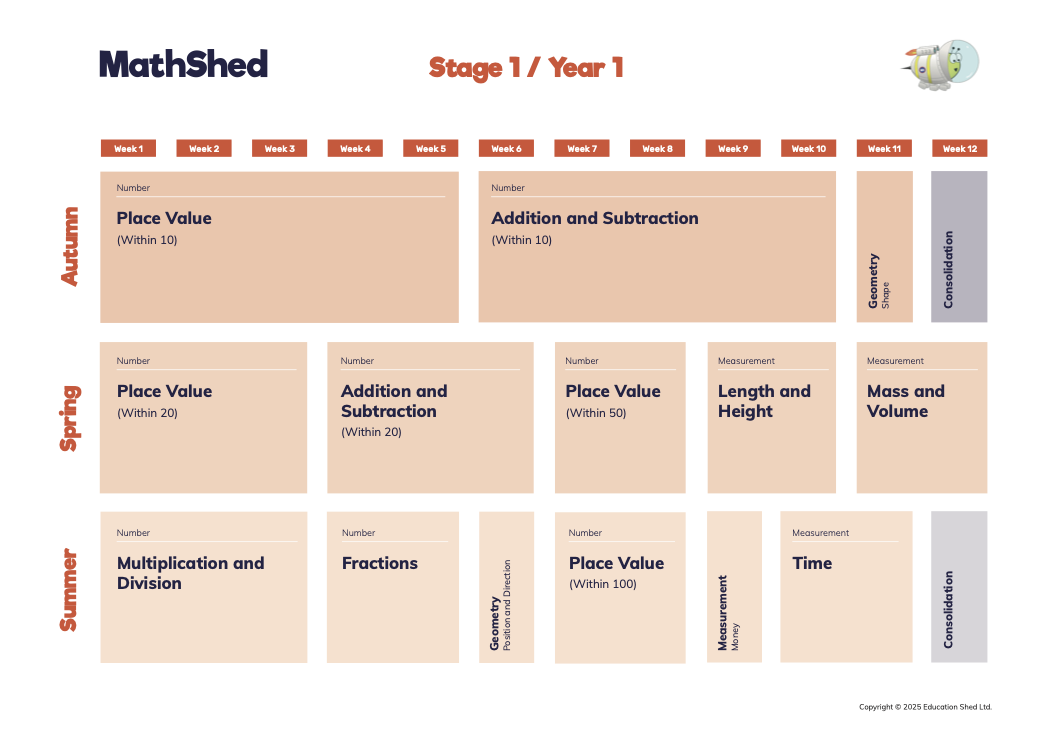
Year 2 Yearly Overview:
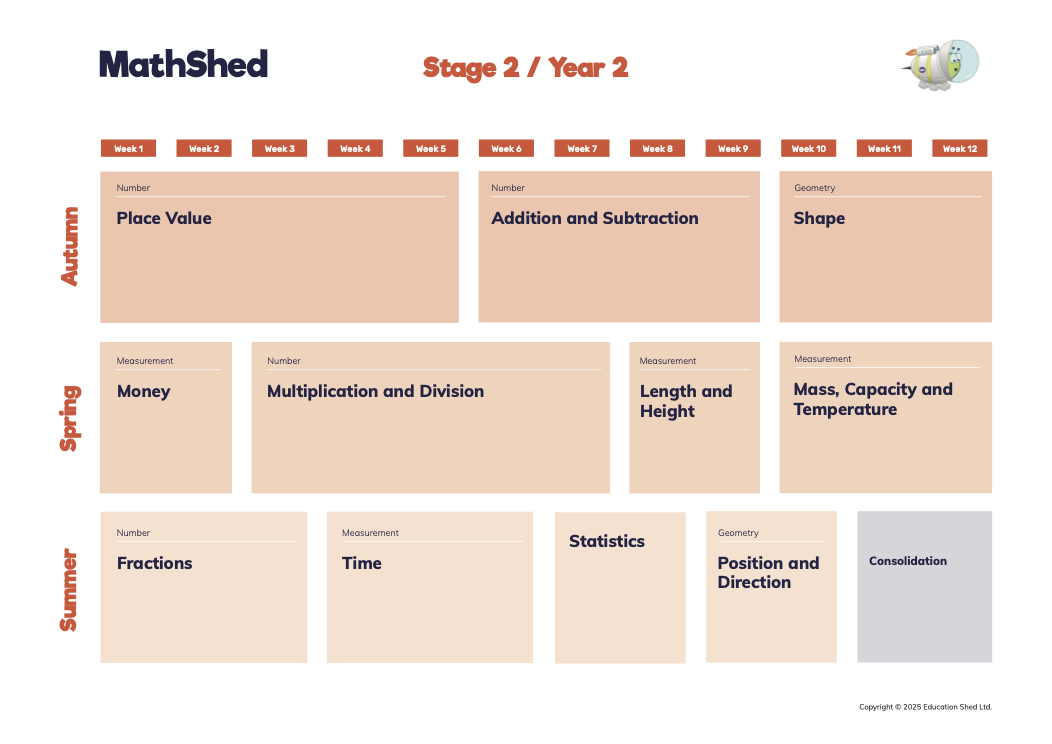
Year 3 Yearly Overview:
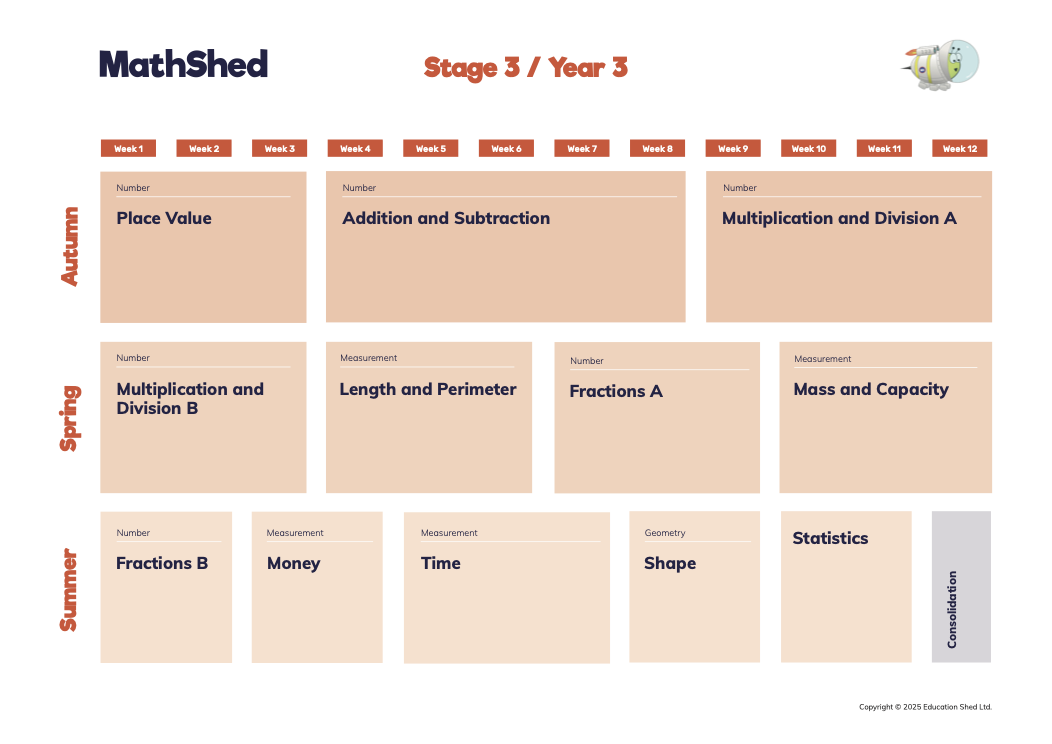
Year 4 Yearly Overview:
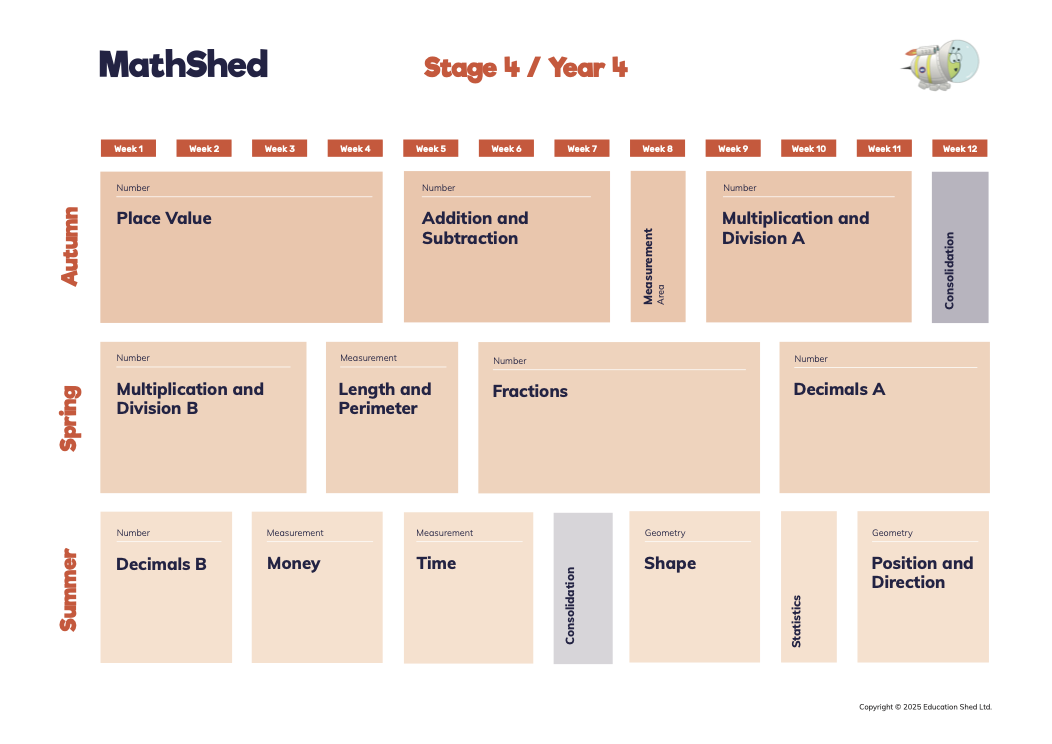
Year 5 Yearly Overview:
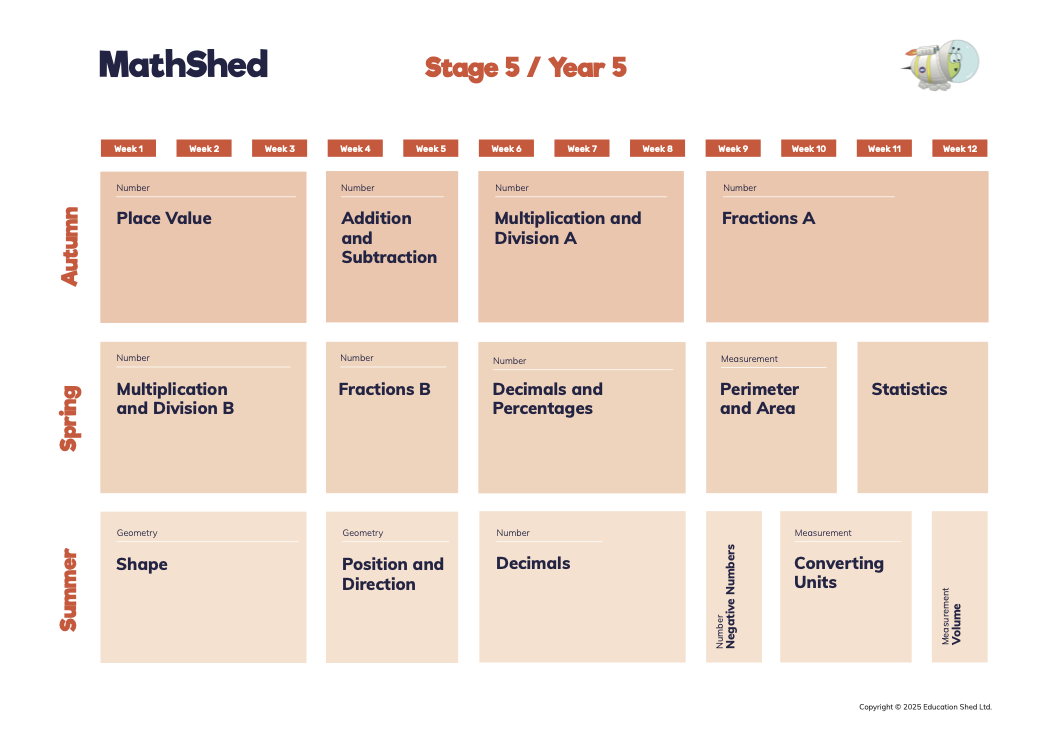
Year 6 Yearly Overview:
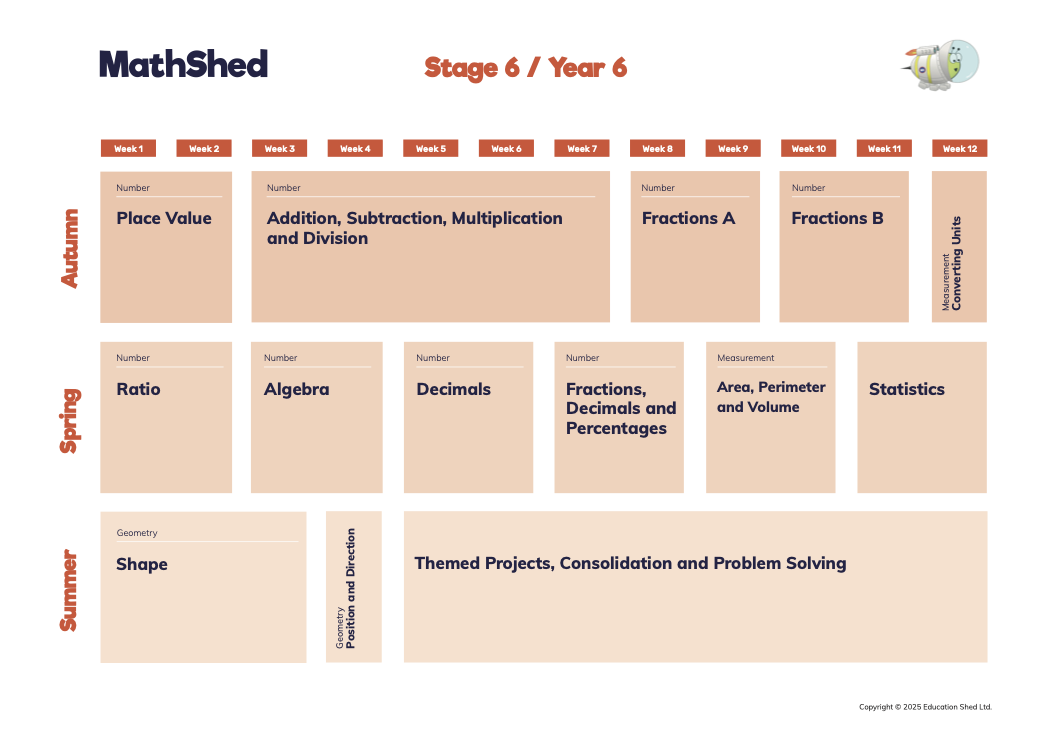
We hope you have found some helpful tips and if you aren’t already part of the MathShed community we look forward to welcoming you to the family soon!
PS. Here’s the blog in a handy PowerPoint format!
PPS. Here’s our MathShed national curriculum mapping too!







